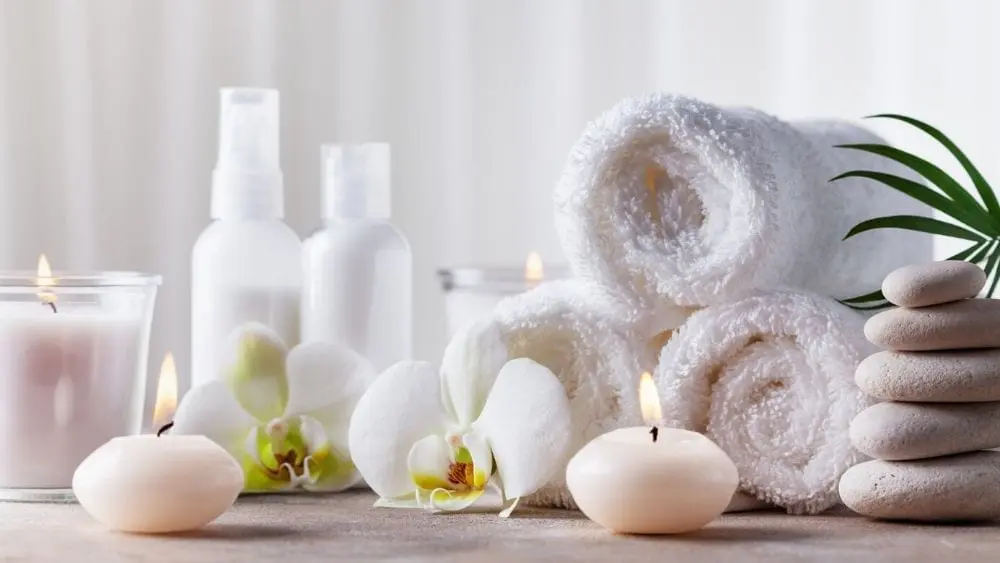
Your home should be a peaceful retreat that recharges and energizes you by easing anxieties rather than building on them. While it may be nearly impossible to control anything in day-to-day life, your home should be an escape from all outside stressors.
The task of transforming your new home into a personal sanctuary can seem daunting and complex at first, especially with all the gadgets and technology that offer an extensive variety of options and tips on how to enhance mental health. With so much information, it can be overwhelming to determine what fits your personal style and needs.
Homes designed with the goal of improving mental health tend to feel open, light, clean, airy, and organized. I find that creating a space in favor of my mental and emotional health begins with meditation and deep personal consideration. There are many ways to design a house that can boost mental and emotional health, but personal reflection will help you immensely in deciding what works best in meeting your unique needs. With some self-reflection and determination, you can create a space that harmonizes an outward aesthetic appeal with an inner peaceful reverence. Here are some simple ideas to get you started.
Natural Lighting
It’s no surprise that sunlight plays an immense part in improving overall health. During the fall and winter, when days become shorter and the sun sinks faster, self-reported depression rates tend to increase.
To give your home an open, airy feeling, brighten up your space by using sheer curtains or leave the bare blinds. If you must use heavy drapery, consider hanging the curtains higher and wider than the actual window. This method will allow more light to seep in, creating a bright and inviting space.
If you have the space, consider a window seat. These can either be purchased or easily built just alongside the window. You might even think about building shelves around or beneath the seating area for books or other storage to create a cozy reading nook.
Light Colors and Open Spaces
Any room will feel larger if painted a very light neutral color or white, thus creating a sense of openness. You might consider painting a very pale version of your favorite color, then adding room accent pieces of darker or richer hues.
An accent wall can also do wonders for the mood of a room. Painting three walls a pale neutral and then adding a warm, full-bodied shade to the color scheme can create a dramatic flair without compromising amicability in the coordination.
Mirrors can also add a touch of style and aesthetics, while making your home feel more spacious and bright. Just as light-colored walls reflect light – and thus give the effect of open air – mirrors give a similar illusion of larger open spaces.
Houseplants
Never fear; even if you did not inherit the green thumb in your family, there are several hearty houseplants that give in abundance yet require very minimal care in return. Greenery not only adds lively and bright tones to a room, but the oxygen released by common houseplants also works as a natural air filter.
Plants such as the peace lily and snake plant (also known as the “Mother-in-Law’s Tongue”) are both powerful plants for improving air quality while adding to your aesthetics. Chic and very in-style, both of these plants work while you sleep to remove toxins from the air and replace them with healthy, clean oxygen. Both require minimal watering and thrive in indirect sunlight.
Floating Furniture
This concept sounds fancy and like a trendy new layout idea that you might see in a magazine spread, but is actually very simple to recreate. Pull your furniture away from the walls and position snugly together, close to a central focal point. With your couch, armchairs, and side table positioned close together, use a stylish rug or coffee table as an anchor to center the pieces.
The goal of this layout is two-fold; it not only creates a clear and open path around the room, but also makes the space feel both intimate and inviting at the same time. When entertaining guests, conversation can flow comfortably as they are in close proximity. You will also notice that the centralization of the furniture makes a room feel bigger and more spacious by creating an air flow and pathway for foot traffic.
Soft Textures
Just as you would add deeper colors to your accent décor, consider interspersing a variety of soft textures throughout your home. Just adding a soft throw blanket or fluffy pillows to the couch gives a warm welcome to guests. If you have hardwood floors, consider a textured rug that adds a calming warmth beneath your feet while also muffling any harsh noises and sounds bouncing off the walls and floor.
Aromatherapy & Essential Oils
The calming effects of essential oils have been around for ages, but have become extremely popular over the last decade. Derived from natural plant sources, these healing oils provide many health benefits including relief from stress, anxiety, depression, and insomnia.
Oil diffusers make it simple to mist your home with essential oils throughout the day, or you can leave them on a timer by your bedside as a sleep aid. Known for their stress-relieving and anxiety-reducing effects, jasmine, lavender, chamomile, rose, and frankincense oils can be diffused to create a powerful agent in your home. They carry a multitude of qualities, such as antidepressant and antibacterial in jasmine, while lavender oil its known for being a calming relaxant and sleep aid.
Clear the Clutter
Nothing makes a home feel more open and free than the act of clearing clutter and waste. Trimming excess can be cathartic and healing for some homeowners. This is another time that personal reflection and consideration will be necessary. Assessing items that have been carried with you from house to house, through each move, but essentially serve no current purpose and do not bring peace, do not need to be stacked into bins and cramp your space.
For me, organizing my surroundings is important because it helps me set the stage for the real work in decluttering the emotions and stress that build up over time. When my home is organized, it relieves a certain burden and allows me the time to take a deep breath and relax in my own space.
Establish a Simple Housekeeping Routine
Along with decluttering, maintaining a clean and organized home is essential to aiding and improving mental health. Both routine and structure aid in combating anxiety and depression in many adults. Whether your routine is as simple as devoting 20 minutes a day to tidying up, or as strict as allotting every Saturday morning to an all-or-nothing massive cleaning session, the choice is your own. I recommend starting with small goals to establish the schedule, then add more to it once the routine becomes regular.
If you have a particularly busy schedule and it becomes a challenge to set aside time for regular cleaning, consider hiring a housekeeping service once a week. Or, think about investing in a Roomba vacuum to clean your floors while you are preoccupied or out of the house, giving you the gift of always coming back to a clean home at the end of the day.
Take a Deep Breath, Then Create Your Sanctuary
If you start small and then slowly work your way outwards, I can attest that the task is manageable. Begin by thinking of one item or concept that brings you true joy, then build on this idea. Remain focused and remember that your home-care is also your self-care. In no time, your home will become a personal haven that serves the purpose of improving your mental health with ease and comfort.

Melanie Theriault is a writer, counselor, and lifelong learner. She holds a B.A. in Sociology from Southwestern University, where she discovered her passion for fostering human connection through storytelling.
 How to Host Your First Thanksgiving
How to Host Your First Thanksgiving